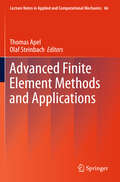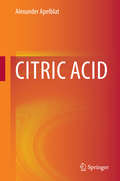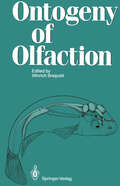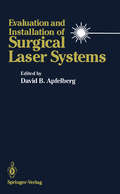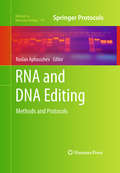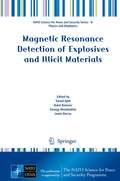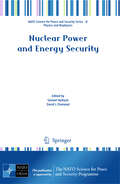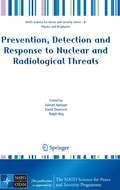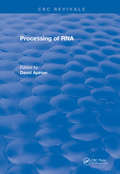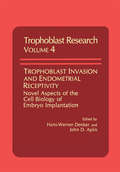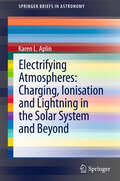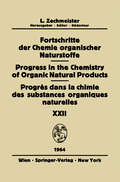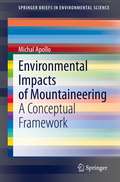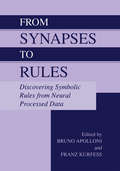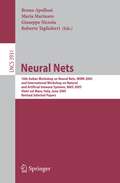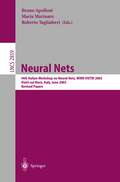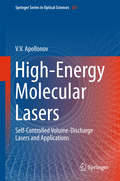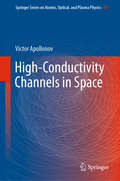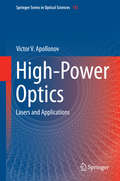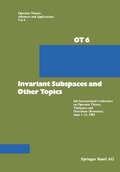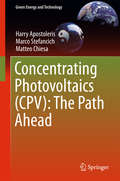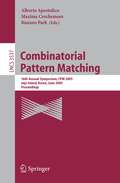- Table View
- List View
Advanced Finite Element Methods and Applications (Lecture Notes in Applied and Computational Mechanics #66)
by Thomas Apel Olaf SteinbachThis volume on some recent aspects of finite element methods and their applications is dedicated to Ulrich Langer and Arnd Meyer on the occasion of their 60th birthdays in 2012. Their work combines the numerical analysis of finite element algorithms, their efficient implementation on state of the art hardware architectures, and the collaboration with engineers and practitioners. In this spirit, this volume contains contributions of former students and collaborators indicating the broad range of their interests in the theory and application of finite element methods.Topics cover the analysis of domain decomposition and multilevel methods, including hp finite elements, hybrid discontinuous Galerkin methods, and the coupling of finite and boundary element methods; the efficient solution of eigenvalue problems related to partial differential equations with applications in electrical engineering and optics; and the solution of direct and inverse field problems in solid mechanics.
Citric Acid
by Alexander ApelblatThis monograph is devoted to different aspects associated with citric acid, inorganic citrates and their aqueous and organic solutions. It includes information about properties, occurrence and technological applications of citric acid and inorganic citrates. Phase equilibria - melting, freezing, boiling, vapour pressures, solubilities of citric acid in water, organic solvents and ternary systems are presented, correlated, and analyzed. Dynamic properties - viscosities, diffusion coefficients, electrical conductivities and surface tensions are examined. Mathematical representations of citric acid dissociation, in electrolyte solutions and in buffers are discussed. Citric acid chemistry - syntheses of citric acid, neutralization, degradation, oxidation, esterification, formation of anhydrides, amides and citrate-based siderophores is reviewed.
Ontogeny of Olfaction: Principles of Olfactory Maturation in Vertebrates
by Raimund ApfelbachThe impacts of specifically experienced external and internal environments upon phylogenetically established pathways of ontogenetic development seem to be responsible for the intra-species variation of organisms. Therefore normal function, as well as disorders of sensory systems, can often be better understood by considering the principles of ontogenetic maturation and the time schedule of environmental influences during that period. Sensory organs and systems have long been considered to be hereditally determin ed for their analysis of the environment. However, it is becoming more and more clear that their specificity depends also upon the sequence and nature of environ mental impacts, impacts during highly sensitive periods of postnatal life being most effective. The present book, using an interdisciplinary approach, has brought together various descriptions of developmental processes for one of the phylogenetically oldest sensory analytical circuits, the olfactory system. Although investigations of a wide range of vertebrates are included, from marsupials to man, the main attention was given to rodents, the most frequently used experimental animal in this fields of research. Authors have been asked for reviews and original considerations on the rationales of developmental principles in the olfactory system, and wherever appropriate to highlight its uniqueness or similarities with other parts of the nervous system. Authors were also asked to consider future needs of research in their fields, to describe their own approaches in this context, and to outline general horizons of neurodevelopmental research.
The Restoring Ecological Health to Your Land Workbook (The Science and Practice of Ecological Restoration)
by Steven I. Apfelbaum Alan HaneyThis is the first practical guidebook to give restorationists and would-be restorationists with little or no scientific training or background the “how to” information and knowledge they need to plan and implement ecological restoration activities.The first part of the book introduces the process of ecological restoration in simple, easily understood language through specific examples drawn from the authors’ experience in restoring their own lands. The second half shows how that same “thinking” and “doing” can be applied to North America’s major ecosystems and landscapes in any condition or scale.No other ecological restoration book leads by example and first-hand experience like this one. It represents a unique and important contribution to the literature on restoration.
Evaluation and Installation of Surgical Laser Systems
by David B. ApfelbergThe advent in the 1960s of the unique and exciting new form of energy called laser brought to medicine a marvelous tool that could accomplish new treatments of previously untreatable disorders as well as improved treat ment of mundane problems. This brilliant form of light energy is many times more powerful than the energy of the sun yet can be focused microscopically to spot sizes as small as 30 microns. Lasers can be directed into seemingly inaccessible areas by mirrors or fiberoptic cables or can be directly applied into sensitive areas such as the retina without damage to intervening structures. There has been a rapid proliferation in the use of lasers in all surgical specialties. Starting with bold ideas and experiments of "thought leaders" in each specialty, the application of lasers has evolved into commonplace usage. Beginning with the era when laser presentations and publications were an oddity, now nearly all specialty areas have whole sections of meetings or journals devoted exclusively to laser usage. Laser specialty societies within a specialty have developed and residency training programs routinely instruct trainees in laser techniques. Basic science and clinical experimentation has supported laser knowledge. Laser usage has also become international. Newer wavelengths and accessories have added to the armamentarium of laser usage. Despite the rapid growth in laser interest, no single source exists to instruct the many new laser users in proper, safe, and effective use of this new modality.
RNA and DNA Editing: Methods and Protocols (Methods in Molecular Biology #718)
by Ruslan AphasizhevThe recent expansion in diversity of RNA and DNA editing types has stimulated the development of many unique genetic, molecular, biochemical, and computational approaches to biological issues. In RNA and DNA Editing: Methods and Protocols, leading experts in the field introduce methods developed over the last few years to study editing substrates, mechanisms of specificity, and functions of RNA and DNA editing enzymes and complexes. Sections of the book are dedicated to state-of-the art techniques which enable investigation of uracil insertion/deletion RNA editing in mitochondrion of Trypanosoma brucei, adenosine to inosine RNA editing, cytidine to uracil RNA and DNA editing, as well as tRNA editing and RNA modifications. Written in the highly successful Methods in Molecular Biology™ series format, chapters include introductions to their respective topics, lists of the necessary materials and reagents, step-by-step, readily reproducible laboratory protocols, and key tips on troubleshooting and avoiding known pitfalls. Authoritative and cutting-edge, RNA and DNA Editing: Methods and Protocols seeks to inspire the further development of these vital and powerful techniques.
Magnetic Resonance Detection of Explosives and Illicit Materials (NATO Science for Peace and Security Series B: Physics and Biophysics)
by Tomaž Apih Bulat Rameev Georgy Mozzhukhin Jamie BarrasDetection of concealed explosives is a notoriously difficult problem, and many different approaches have been proposed to solve this problem. Nuclear quadrupole resonance (NQR) is unique in many ways. It operates in a safe AM radio frequency range, and it can remotely detect unique “fingerprint” (NQR spectrum) of many explosives, such as TNT or RDX. As such, the detection of target does not depend on the shape or material of the container, or the presence of metallic object such as triggers etc. Spectra of chemically similar compounds differ enough that their presence never causes interference or false alarms. Unfortunately, widespread use is prevented due to low sensitivity, radiofrequency interference from the noisy environment, and inability to detect liquid explosives. This book presents current state of the art of the attempts to overcome NQR sensitivity problem, either by increasing the strengths of signals generated, or by increasing the specificity of the technique through a better understanding of the factors that affect the quadrupolar parameters of specific explosives. The use of these specific quadrupolar parameters is demonstrated on signal processing techniques that can detect weak signals, which are hidden in a noisy background. The problem of differentiation of liquid explosives and benign liquids in closed containers is approached by measurements of different nuclear magnetic resonance (NMR) parameters. As shown, a couple of solutions has reached a prototype stage and could find their use in a near future.
Countering Nuclear and Radiological Terrorism (Nato Security through Science Series B: #Vol. 7)
by Samuel Apikyan David DiamondSinc the dissolution of the Soviet Union the nuclear threats facing the world are complex and constantly evolving.This volume is structured to promote wide-ranging, multi-national exploration of critical technology needs and underlying scientific challenges to reducing the threat of nuclear/radiological terrorism; to illustrate through country-specific presentations how resulting technologies were used in national programs; and to outline the role of legal, policy and institutional frameworks in countering nuclear/radiological terrorism.
Nuclear Power and Energy Security (NATO Science for Peace and Security Series B: Physics and Biophysics)
by Samuel Apikyan David DiamondThe basic logic is very simple. Countries around the globe have a need for more electrical generating capacity because of increases in population and increases in energy use per capita. The needs are constrained by the requirement that the ba- load energy source be economical, secure, and not emit climate-changing gases. Nuclear power fits this description. Therefore, many countries that have not had a nuclear power program (or only had a small program) see a need to develop one in the future. However, the development of a national nuclear energy program is not so simple. The purpose of the NATO Advanced Research Workshop on Nuclear Power and Energy Security was to contribute to our understanding of how these programs might evolve. The workshop took place 26–29 May 2009 in Yerevan, Armenia. Approximately 50 participants discussed the infrastructure that is needed and some of the reactor options that might be considered. The papers in this book helped define the discussion that took place. The infrastructure that is needed includes a legal framework, a functioning regulator, a plan for waste disposal, a plan for emergency response, etc. These needs were explained and just as importantly, it was explained what international, bilateral, and regional cooperation is available. Although there were many co- tries represented, the Armenian experience was of particular interest because of where the meeting was located. The papers on reactor options covered both innovative and evolutionary designs.
Prevention, Detection and Response to Nuclear and Radiological Threats (NATO Science for Peace and Security Series B: Physics and Biophysics)
by Samuel Apikyan David Diamond Ralph WayStemming from the NATO Advanced Research Workshop, this book asserts that no single institution or country possesses all the resources to effectively address radiological and nuclear threats. Moreover, the book asserts that fundamental scientific challenges must be overcome to achieve new and improved technologies. In response, the book sets forth research strategies that advance the ability to counter nuclear and radiological threats.
Processing of RNA: Processing Of Rna (1983) (CRC Press Revivals)
by David ApirionIn a fast-moving field it is unlikely that articles written more than a year ago would be completely up to date. The purpose of this book is to bring to the nonspecialist an overall view as well as an update on the state of the art as it existed in the beginning of 1982, and to the specialist the opportunity to have a single source of information for how the other organisms do it, and also to enable him to find out the status of the various aspects of RNA processing with which he might not be to familiar. even if only some of these goals are achieved, all those who labored so diligently to bring about the publication of this book would be more than gratified.
Processing of RNA (CRC Press Revivals)
by David ApirionIn a fast-moving field it is unlikely that articles written more than a year ago would be completely up to date. The purpose of this book is to bring to the nonspecialist an overall view as well as an update on the state of the art as it existed in the beginning of 1982, and to the specialist the opportunity to have a single source of information for how the other organisms do it, and also to enable him to find out the status of the various aspects of RNA processing with which he might not be to familiar. even if only some of these goals are achieved, all those who labored so diligently to bring about the publication of this book would be more than gratified.
Trophoblast Invasion and Endometrial Receptivity: Novel Aspects of the Cell Biology of Embryo Implantation (Trophoblast Research #4)
by John D. Aplin Hans-Werner DenkerInterest in mechanisms of embryo implantation is increasing, particularly with the realization that failure of implantation after in vitro fertilization and embryo transfer places significant limits on the success of treatment. In addition, there is a need to provide hypotheses, and ultimately mechanisms, for the high rates of embryonic loss in women in the population at large. Traditionally, implantation research has concentrated on genetics and endocrinology without providing many therapeutic benefits. A new era is now beginning with the application of modem cellular and molecular approaches to the investigation of the relationship between trophoblast and endometrium. At the same time, older data can be reevaluated in the light of current research into cell cell and cell-matrix interactions. The feeling that new avenues of research are open was apparent when an international group of scientists came together at a workshop on "The Cell Biology of Trophoblast Invasion In Vivo and In Vitro" held during the XXIV Annual Meeting of the Cell, Tissue and Organ Culture Study Group (C.T.O.C.) at Heidelberg in 1986. What was unusual about this Conference was the interdisciplinary dialogue between implantation researchers and tumor biologists, highlighting aspects common to invasion of trophoblast and tumor cells.
Electrifying Atmospheres: Charging, Ionisation and Lightning in the Solar System and Beyond (SpringerBriefs in Astronomy)
by Karen AplinElectrical processes take place in all planetary atmospheres. There is evidence for lightning on Venus, Jupiter, Saturn, Uranus and Neptune, it is possible on Mars and Titan, and cosmic rays ionise every atmosphere, leading to charged droplets and particles. Controversy surrounds the role of atmospheric electricity in physical climate processes on Earth; here, a comparative approach is employed to review the role of electrification in the atmospheres of other planets and their moons. This book reviews the theory, and, where available, measurements, of planetary atmospheric electricity, taken to include ion production and ion-aerosol interactions. The conditions necessary for a global atmospheric electric circuit similar to Earth’s, and the likelihood of meeting these conditions in other planetary atmospheres, are briefly discussed. Atmospheric electrification is more important at planets receiving little solar radiation, increasing the relative significance of electrical forces. Nucleation onto atmospheric ions has been predicted to affect the evolution and lifetime of haze layers on Titan, Neptune and Triton. For planets closer to Earth, heating from solar radiation dominates atmospheric circulations. Mars may have a global circuit analogous to the terrestrial model, but based on electrical discharges from dust storms, and Titan may have a similar global circuit, based on transfer of charged raindrops. There is an increasing need for direct measurements of planetary atmospheric electrification, in particular on Mars, to assess the risk for future unmanned and manned missions. Theoretical understanding could be increased by cross-disciplinary work to modify and update models and parameterisations initially developed for a specific atmosphere, to make them more broadly applicable to other planetary atmospheres. The possibility of electrical processes in the atmospheres of exoplanets is also discussed.
Fortschritte der Chemie Organischer Naturstoffe / Progress in the Chemistry of Organic Natural Products / Progrès dans la Chimie des Substances Organiques Naturelles (Fortschritte der Chemie organischer Naturstoffe Progress in the Chemistry of Organic Natural Products #22)
by R. T. Aplin G. Billek J. F. Grove T. G. Halsall W. Keller-Schierlein V. Prelog K. Schaffner P. J. Scheuer H. ZähnerEnvironmental Impacts of Mountaineering: A Conceptual Framework (SpringerBriefs in Environmental Science)
by Michal ApolloThis book investigates the consequences of mountaineering (hiking, trekking, climbing) on the natural environment. These consequences are divided into three groups: 1) transformations caused by the mountaineer’s, or other people’s, stay in a mountaineering region; 2) transformations caused by the mountaineer’s travel (movement) through a mountaineering region, with the consideration of the ground type (rock, rock and grass, grass, residual soil, snow, ice), and 3) transformations caused by the use of mountaineering equipment. Each of the three groups are examined individually for their direct interference with the environment, i.e. caused by the main activities of climbing, trekking and hiking (both for elite and mass mountaineering) and their indirect interference caused by auxiliary activity (mainly in the case of mass mountaineering). Auxiliary activity includes guide services, transport of equipment, use of base camp facilities and the delivery of artificial support equipment, and supports the main activity. The consequences of mountaineering on the natural environment are characterized in terms of individual components of the environment (land relief, soil, vegetation, fauna, and landscape) and location/zone of mountaineering activity (hiking, trekking or climbing zone). Because of the connections and interdependence between particular components of the environment (biotic and abiotic), only preservation of each of them can bring the desired effect – a reduction in the negative impact of mountaineering. This book presents comprehensive research outcomes and serves as a platform for more detailed, future studies.
From Synapses to Rules: Discovering Symbolic Rules from Neural Processed Data
by Bruno Apolloni Franz KurfessOne high-level ability of the human brain is to understand what it has learned. This seems to be the crucial advantage in comparison to the brain activity of other primates. At present we are technologically almost ready to artificially reproduce human brain tissue, but we still do not fully understand the information processing and the related biological mechanisms underlying this ability. Thus an electronic clone of the human brain is still far from being realizable. At the same time, around twenty years after the revival of the connectionist paradigm, we are not yet satisfied with the typical subsymbolic attitude of devices like neural networks: we can make them learn to solve even difficult problems, but without a clear explanation of why a solution works. Indeed, to widely use these devices in a reliable and non elementary way we need formal and understandable expressions of the learnt functions. of being tested, manipulated and composed with These must be susceptible other similar expressions to build more structured functions as a solution of complex problems via the usual deductive methods of the Artificial Intelligence. Many effort have been steered in this directions in the last years, constructing artificial hybrid systems where a cooperation between the sub symbolic processing of the neural networks merges in various modes with symbolic algorithms. In parallel, neurobiology research keeps on supplying more and more detailed explanations of the low-level phenomena responsible for mental processes.
Neural Nets: 16th Italian Workshop on Neural Nets, WIRN 2005, International Workshop on Natural and Artificial Immune Systems, NAIS 2005, Vietri sul Mare, Italy, June 8-11, 2005, Revised Selected Papers (Lecture Notes in Computer Science #3931)
by Bruno Apolloni Maria Marinaro Giuseppe Nicosia Roberto TagliaferriThis book constitutes the thoroughly refereed postproceedings of the 16th Italian Workshop on Neural Nets, WIRN 2005, as well as the satellite International Workshop on Natural and Artificial Immune Systems, NAIS 2005, held in Vietri sul Mare, Italy in June 2005. The 41 revised papers presented together with a lecture by the winner of the Premio Caianiello award were carefully reviewed and improved during two rounds of selection and refereeing.
Neural Nets: 14th Italian Workshop on Neural Nets, WIRN VIETRI 2003, Vietri sul Mare, Italy, June 4-7, 2003, Revised Papers (Lecture Notes in Computer Science #2859)
by Bruno Apolloni Maria Marinaro Roberto TagliaferriHigh-Energy Molecular Lasers: Self-Controlled Volume-Discharge Lasers and Applications (Springer Series in Optical Sciences #201)
by V. V. ApollonovThis book displays the physics and design of high-power molecular lasers. The lasers described are self-controlled volume-discharge lasers. The book explains self-sustained discharge lasers, self-initiated discharge lasers and technical approaches to laser design. Important topics discussed are laser efficiency, laser beam quality and electric field homogeneity. The book contains many new innovative applications.
High-Conductivity Channels in Space (Springer Series on Atomic, Optical, and Plasma Physics #103)
by Victor ApollonovThis book discusses the physics of conductive channel development in space, air and vacuums and summarizes the attempts to create super-long conductive channels to study the upper atmosphere and to complete specific tasks related to energy transmission from the space to earth with high-voltage high repetition rate electrical sources. Conductive channels are produced by the laser jet engine vehicle-propulsion under the influence of powerful high repetition rate pulse-periodic laser radiation by CO2-laser, solid state Nd YAG,HF/DF laser systems generated with each pulse of the powerful laser conductive dust plasma. The book also presents the experimental and theoretical results of conductive canal modeling: the laser jet engine vehicle “Impulsar”, which can reach the lower layers of the ionosphere in several hundred seconds. Further, the book explores the development of lightning protection systems. The so-called long laser spark is generated to provide the conditions for connecting a thunderstorm cloud with a grounded metal rod, i.e. a classical lightning rod. Such conductivity channels can be used for energy transmission, overvoltage protection systems, transport of charged particle beams and plasma antennas. It provides the theoretical and experimental basis of high repetition rate P-P mode of operation for high power lasers (COIL, HF/DF, CO2,Nd YAG). It describes high efficiency and excellent beam quality disk lasers used for numerous applications, including surface treatment of dielectric materials in microelectronics, cutting, drilling, welding, polishing and cleaning of the surface and other technological operations. Lastly it investigates how megawatt mono-module disk lasers could be used to solve various problems: small satellites launched by lasers, formation of super-long conducting channels in space and atmosphere, cleaning of the near-earth space from the space debris and related applications.
High-Power Optics: Lasers and Applications (Springer Series in Optical Sciences #192)
by Victor V. ApollonovThis book covers the basics, realization and materials for high power laser systems and high power radiation interaction with matter. The physical and technical fundamentals of high intensity laser optics and adaptive optics and the related physical processes in high intensity laser systems are explained. A main question discussed is: What is power optics? In what way is it different from ordinary optics widely used in cameras, motion-picture projectors, i.e., for everyday use? An undesirable consequence of the thermal deformation of optical elements and surfaces was discovered during studies of the interaction with powerful incident laser radiation. The requirements to the fabrication, performance and quality of optical elements employed within systems for most practical applications are also covered. The high-power laser performance is generally governed by the following: (i) the absorption of incident optical radiation (governed primarily by various absorption mechanisms), (ii) followed by a temperature increase and response governed primarily by thermal properties and (iii) the thermo-optical and thermo-mechanical response of distortion, stress, fracture, etc. All this needs to be understood to design efficient, compact, reliable and useful high power systems for many applications under a variety of operating conditions, pulsed, continuous wave and burst mode of varying duty cycles. The book gives an overview of an important spectrum of related topics like laser resonator configurations, intermetallic optical coatings, heat carriers for high power optics, cellular materials, high-repetition-rate lasers and mono-module disk lasers for high power optics.
Invariant Subspaces and Other Topics: 6th International Conference on Operator Theory, Timişoara and Herculane (Romania), June 1–11, 1981 (Operator Theory: Advances and Applications #6)
by Apostol Douglas Nagy VoisulescuThe annual Operator Theory conferences in Timigoara are conceived as a means to promote cooperation and exchange of in formation between specialists in all areas of Operator Theory. The present volume consist of papers contributed by the partici pants of the 1981 Conference. Since many of these papers contain results on the invariant subspace problem or are related to the role of invariant subspaces in the study of operators or operator systems, we thought it appropiate to mention this in the title of the volume, though the "other topics" have a wide range. As in past years, special sessions concerning other fields of Functio nal Analysis were organized at the 1981 Conference, but contri butions to these sessions are not included in the present volume. The research contracts of the Department of Mathematics of INCREST with the National Council for Sciences and Technology of Romaliia provided the means for developping the research activity in Functional Analysis; these contracts constitute the generous framework for these meetings. We want also to acknowledge the support of INCREST and the excelent organizing job done by our host - University of Timigoa ra-. Professor Dumitru Gagpar and Professor Mircea Reghig are among those people in Timigoara who contributed in an essential way to the success of the meeting.
Concentrating Photovoltaics (Green Energy and Technology)
by Harry Apostoleris Marco Stefancich Matteo ChiesaThis book is a concise review of the current status and future prospects of concentrating photovoltaic (CPV) technology. Starting with a summary of the current technical and economic status of CPV technology, it identifies the factors that hold CPV back in the commercial market. The main technical areas considered are solar cells, tracking and optics. The solar cells section focuses on spectrum splitting systems, which offer potentially higher efficiency than multi-junction cells with reductions in the manufacturing constraints that lead to high costs. It also offers a brief survey of the latest developments in spectral splitting alongside a discussion of the advances in solar cell manufacturing that aid the development of such systems. Further, it examines electrical design principles for spectral splitting systems that can improve the spectral stability of these systems’ performance. The section on tracking includes a description of tracking integration with an update of the review published in Nature, presenting the latest advances in the field and focusing on surveying conceptual approaches rather than providing an exhaustive description of the literature. The optics section explores 3D printing and other emerging methods of fabricating optics for both prototype and large-scale production, as well as new classes of concentrators, particularly those based on novel photonic materials such as angular filters. Lastly, the authors consider the impact that environmental factors have on the performance of CPV in non-standard environments before concluding with a discussion of the combinations of technologies that they anticipate will most effectively boost CPV in the commercial market.
